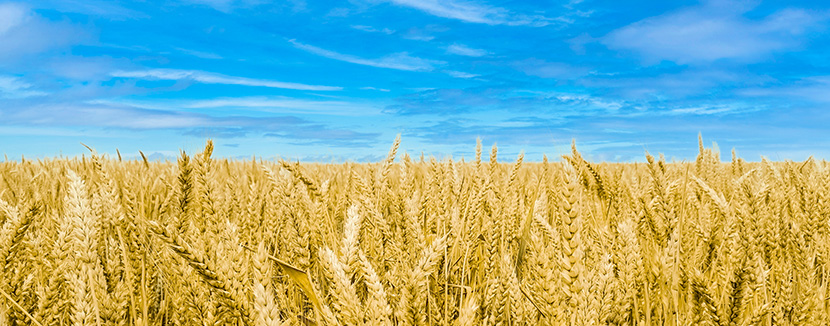Rebuilding Success Magazine Features - Fall/Winter 2022 > Ukraine War: Impact on the Canadian Economy
Ukraine War: Impact on the Canadian Economy
 |
By Jim Algie
Ukraine war shocks add to a growing list of social, economic and geopolitical factors to boost global, business uncertainty and trigger rising expectations for Canadian insolvency rates.
Second quarter data posted by the Office of the Superintendent of Bankruptcy in August showed business insolvency filings for the first half of 2022 up 32.4% when compared with the same quarter of 2021, and up 26.3% when compared with the last six months of 2021. The number of business insolvencies was essentially the same in the first and second quarter of 2022. Final data for 2021 issued June 13, shows Canada’s annual insolvency rate (insolvencies per 1,000) at 2.9 per cent, slightly below the 3.2 rate for 2020 and just over half of the 5.1 rate for 2010.
Consumer filings rose 3.7% in the first half of 2022, when compared with the first half of 2021, and up 11.7% when compared with the last six months of 2021. A comparison of the number of consumer insolvencies between the first and second quarter of 2022 shows an increase of 9.2%. Even so, the numbers remained lower through early 2022 than pre-pandemic patterns, CAIRP Chair Jean-Daniel Breton said in an interview from his Montréal office. And initial trends for the year were hard to delineate from their causal influences, he said.
“For sure we know that the war in Ukraine and in Russia does have an impact, but I could never personally quantify how much of an impact there is,” said Breton. He emphasized the role of broad, economic trends in this year’s insolvency expectations and predicted a gradual increase in filings toward pre-pandemic levels.
Breton referred to a 2022 business landscape that includes the end to pandemic-related, domestic subsidies; continued, supply-chain disruptions; potentially slower Chinese output because of that nation’s strict Covid-19 control measures; rising inflation; rising interest rates and widespread talk of recession.
The Bank of Canada and central banks elsewhere have begun tightening fluid, monetary policy and raising interest rates, seeking to subdue inflationary trends from rising petroleum and food costs, some of which results from Ukraine War disruptions to international trade in both oil and grains.
The United Nations Food Price Index actually showed a slight decline in May mainly because of lower prices for vegetable oil and dairy products. However, cereal prices continued to rise over war-related disruptions to trade in grains from Ukraine and Russia, two of the world’s largest grain exporting nations.
Early June analysis by Farm Credit Canada Sr. Economist Graeme Crosbie cited Canadian food price inflation at the highest level in a decade, partly because of Ukraine War markets. Statistics Canada’s Consumer Price Index for May stood at 7.7%, year-over-year. That was the largest annual increase since January of 1983 and well above the central bank’s 2% target.
In one forecast of Ukraine War consequences, Conference Board of Canada Chief Economist Petro Antunes cited several negative trends mainly from high inflation and its impact on household spending. He concluded, however, that Canadian resource producers will also benefit from commodity price increases and summarized the Ukraine War impact on the Canadian economy as, “almost neutral . . . just slightly positive, but turning negative in 2023.”
The Bank of Canada’s Financial System Review for 2022, issued in early June, identifies some risk from high levels of mortgage debt among Canadian households. However, the agency also concluded Canadian businesses are “generally in good financial shape and appear well positioned to handle higher interest rates.”
Bank analysis warned that European conflict has “introduced a short-term trade off between energy security and transition plans in response to climate-related risks.” It has also “increased cyber risks,” the bank report said.
Such a long and growing list of financial-world factors does indicate a likely pickup in Canadian insolvency filings, said veteran insolvency litigator David Bish of the Torys law firm.
“A lot of these things are coming home to roost,” Bish said in an interview from his Toronto home. “People have been talking about interest rate hikes for a long time . . . they’re undeniable at this point,” he said.
“People are really predicting the lag,” Bish added. “How long before what we’re already seeing has an impact on companies and their liquidity, their financial health?” he said.
“The conventional thinking is by the end of the year, last quarter of this year and next year; we’ll see this,” Bish said of an expected increase in insolvencies. It’s really too early to see much in the way of litigation as part of a business cycle shift which typically gets identified first by lenders.
“They start to see covenant defaults . . . they start to put companies on their watch list and they start to notice their watch list is growing,” Bish said of the lenders’ perspective. “You may see maturity issues,” as bonds start to approach maturity, “and there are questions about a company’s ability to refinance or repay those bonds, particularly if you have to refinance at higher interest rates,” he said.
None of the most affected nations -- Ukraine, Belarus or Russia -- is among Canada’s most active trading partners. University of British Columbia economist Werner Antweiler, an associate professor at the Sauder School of Business, concluded in his online blog that Canada’s “minuscule” trade with Russia is “too small in volume to matter much in the great scheme of things.”
Among three countries nearest the conflict, Russia has been Canada’s largest customer by far in recent years, although that seems likely to change with increased Canadian involvement with Ukraine. Russia placed 27th in 2016 among 120 countries receiving direct investment from Canada (about $3.5 billion), a Library of Parliament research paper says. Canadian exports to Russia in 2021 stood at $656.7 million, a tiny fraction of Canada’s total exports, judging by Antweiler’s analysis.
Federal government estimates for 2018 show Canadian direct investment in Ukraine at about $685 million. Trade with Belarus in 2016 exceeded $99 million, mostly from iron, steel and nitrogenous fertilizers, although Canadian exports to Belarus have grown since 2017 from about $3 million to more than $15 million.
Judging by the pace of legal consultations to date, Bish said, the most consequential aspect of the war has come with Canada’s diplomatic response. Clients are seeking advice about complex, wide-ranging, Canadian sanctions designed to limit transactions with Russia and Belarus and with more than 1,000 named individuals associated with both sanctioned states.
“Everybody is trying to take stock,” Bish said. “What is the extent of my exposure? If I’m a lender, how many loans do I have that are to an affected entity? If I have loans to companies that are at risk because they deal with those Russian companies or Russian individuals, what’s the extent of their exposure?”
Canadian sanctions actually began in 2014 with Russia’s Crimean incursions. The sanctions’ list has expanded frequently since February of this year as the Canadian government adjusts to Russia’s further interventions. By mid-June, export prohibitions to Russia included everything from electronic devices to aircraft and marine parts, petroleum and petro-production equipment to luxury goods, including alcohol, tobacco, jewellery and art. The regulations bar Canadians from dealing with key Russian financial institutions and with named individuals who are close associates of the Russian government, including 203 officials of what government announcements described as the “so-called Luhansk and Donetsk Peoples’ Republics” in eastern Ukraine.
“I think for the most part what we’re seeing are very well-intentioned people who want to abide by the rules but don’t want to be penalized for breaching the rules,” Bish said of client inquiries to date. “People are spending a lot of time trying to understand if they can get comfortable and what alternatives are available to them that don’t require them to be in the middle of these issues.”
Much about the reaction to mounting economic uncertainty among Canadian households and businesses will depend on “people’s perceptions of what tomorrow will be like,” Breton said. “If business owners are very optimistic about the future, they might show more resilience, hang in there longer, invest more of their personal resources to make it work; be more patient,” he said.
“We’re going toward a period of high inflation, increasing interest rates, a lot of uncertainty in the world and that leads me to believe that insolvency rates are going to be increasing, although I don’t think we’re going to see an avalanche of insolvencies,” Breton said. “I think that we’re going to come back to levels that are comparable to what it was before the pandemic. Perhaps a little higher because of some catch-up effect, but generally speaking I don’t think there’s going to be an economic calamity.”
Often, insolvency and restructuring professionals can help in such circumstances, Breton said. Early intervention can improve outcomes in cases of potential financial difficulty, he said.
“Unfortunately, we probably don’t get called early enough,” Breton said speaking for the role of Licensed Insolvency Trustees. “Even before a company is in deep financial difficulty, a fresh look and advice from a Licensed Insolvency Trustee, can help identify ways of making things better, and the earlier we are consulted, the more options or opportunities may exist.”
